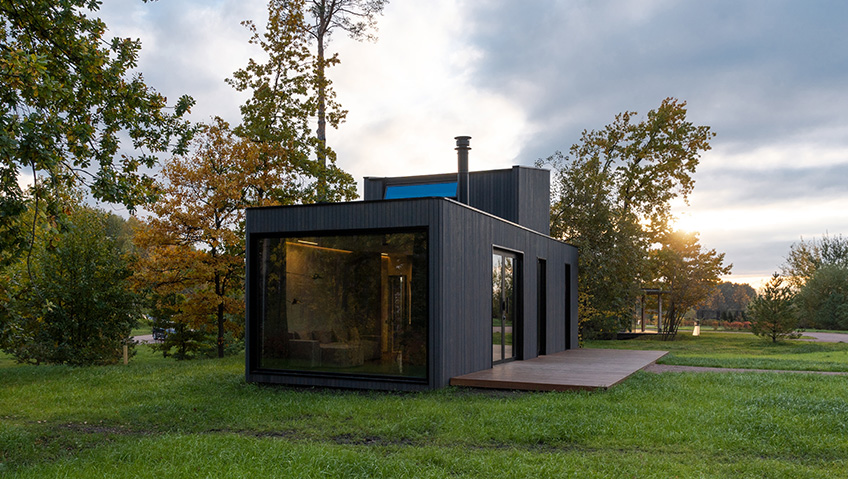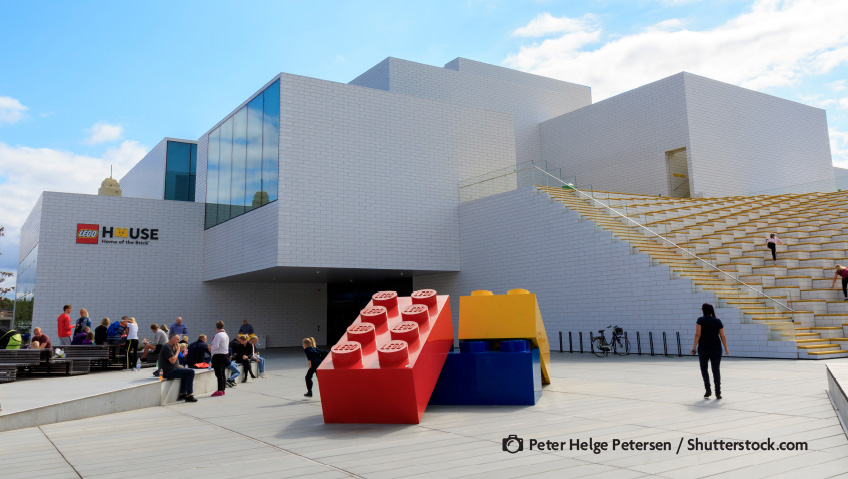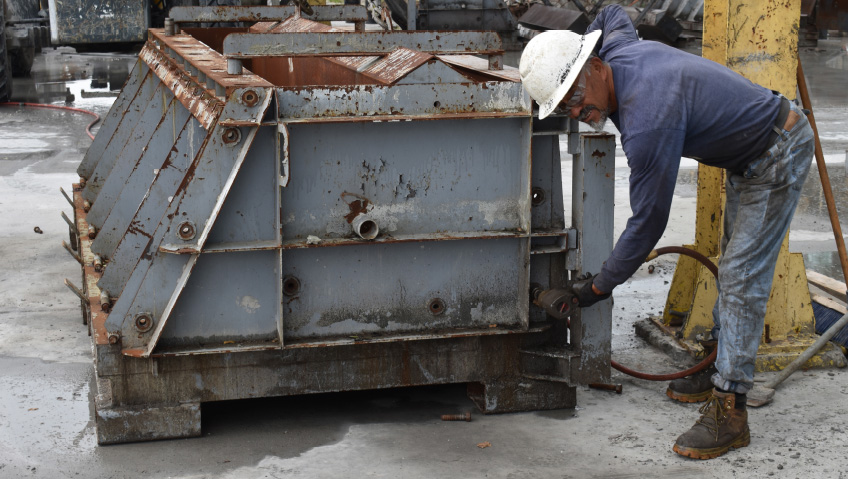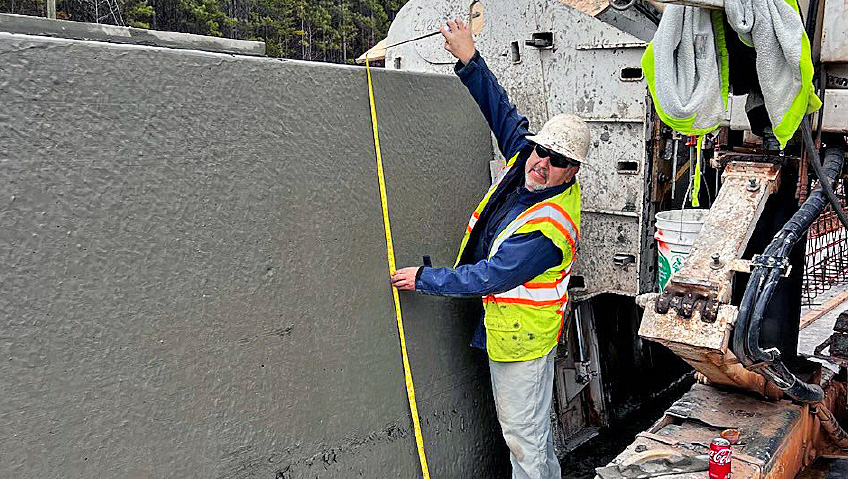From wood to steel and drywall to concrete, traditional building methods and modular construction share many of the same materials—but they are very different when it comes to speed of completion, efficiency, and reducing waste.
About 70 years ago, William Demarest—modular coordinator of the American Institute of Architects—published several booklets, including Building Better from Modular Drawings: The Modular Method in Building Construction (1954), and the U.S. Directory of Modular Building Materials (1955). In both publications, he discussed the many benefits of this revolutionary way of building through text and plenty of illustrations.
Using “invisible 4” cubes as basic units of measure,” Demarest explained how joining two modules creates “a good size for a brick.” Some of the many benefits of this modular method include its simplicity and accuracy. Numbers don’t need to be written anywhere using the cubes, he claimed, and there was no need to add or subtract fractions. “Nothing could be simpler than the way the modular wall fits together,” he wrote.
Once an accurate grid was created, construction fell into place. Benefits of this grid method included its simplicity (since building product manufacturers, draftsmen, estimators, and contractors all use the same 4” module units), fewer errors, and pricing. “An estimate on a modular basis is more reliable,” he stated. “The estimator knows far more accurately what allowances he should make for waste.”
Demarest was not alone at the time in promoting the advantages of modular buildings, a new way of construction. Others, like the U.S. Housing and Home Finance Agency, Division of Housing Research, published Modular Coordination… What is It?… How Does it Work?… Will it Help Reduce Housing Costs? in 1949, with the agency also publishing The Modular Method in Dwelling Design in 1951.
Everything old is new again
Fast forward to 2025, and many of the same benefits of modular construction are being promoted—notably speed and cost-effectiveness. The world changed considerably since Demarest’s booklets came out soon after the second World War. To house North America’s growing population, massive subdivisions were created to keep up with population growth.
To keep up with demand, prefabricated homes became popular. Although not exactly the same thing as today’s modular homes, prefab and modular share similarities, the most notable being the amount of work done offsite in a factory ahead of construction. Modular, as the name suggests, refers to pre-assembled pieces or ‘modules’ manufactured and ready to be put together like building blocks. Many times, wiring and pipes for water and sewage are already installed, ready for hookup.
In the 1956 Directory edition, Demarest wrote: “Although the U.S. construction industry has made impressive progress in building technology since World War II, it is probable that even greater and faster progress could have been achieved through more industry-wide cooperation.”
Meeting population demands
Decades later, we hear the same issues about not just the lack of affordable housing, but available housing, period. Years ago, properties in the suburbs—compared to large cities—were often within financial reach; moving 30 to 60 miles or so from major urban areas meant you could buy a house for a fraction of the cost. This is no longer the case. Those days are fast disappearing, as suburban home prices rival those in any major metropolis.
Another challenge is a lack of skilled tradespeople like carpenters, plumbers, electricians, and painters. Add to that the world is re-examining the incredible amount of waste material produced with traditional construction methods and embracing recycled and eco-friendly products.
Mindful of reducing our global footprint while meeting client demand, more builders are using renewable or recycled materials in construction, for good reason. Some estimates state over 75 percent of conventional construction, renovation, and demolition (CRD) material goes to landfills. Some CRD waste, like plastic, can be recycled, but a disproportionate amount of bricks, shingles, drywall, and other materials remain in dumps. The sheer volume is enormous.
Market intelligence firm The Business Research Company stated the CRD business has gained so much ground recently that “it will grow from $204.48 billion USD in 2024 to $217.91 billion in 2025 at a compound annual growth rate (CAGR) of 6.6 percent. The growth in the historic period can be attributed to shift towards sustainable practices, urban development boom, cost reduction goals, landfill space shortage, [and] resource scarcity concerns.”
Enter modular construction
Facing this flurry of challenges—including a lack of skilled trades, ever-increasing material costs, and environmental pressures—builders need to create homes as quickly, safely, and economically as possible. In 2022, the Canada Mortgage and Housing Corporation (CMHC) projected the nation “needs about 3.5 million additional housing units by 2030 to restore affordability.” Unsurprisingly, the biggest gap is in population-dense provinces Ontario, Quebec, British Columbia, and Alberta.
Increased housing demand has led many cities across Canada and the United States to look at non-traditional construction methods, including prefab, container homes, and modular. While they use many of the same materials as houses built on site—like wood, steel/aluminum and concrete—modular structures boast many advantages for construction companies and their employees. Fabricating sections and entire modules in a clean, organized, and well-lit factory means workers don’t face weather challenges like scorching sun, rain, or snow. Unlike working on a traditional job site, there is little to no waste material being created. Sections arrive in modules, and assembling them on a concrete foundation can be done in a fraction of the time compared to cutting wood and other materials on site.
Indeed, one of the biggest issues facing construction companies is materials. In typical construction, wood, steel, drywall, wiring, plumbing products, and more need to be transported to job sites, then measured, cut, and installed. With modular construction, almost everything is made ahead of time. This not only increases efficiency but also sends more waste materials like plastic, metal, and even cardboard packaging to recycling, instead of landfill.
In his 2021 book, The Future of Modular Architecture, architect and educator David Wallance wrote about the demand for more housing, stating that cities are growing at a rate of 1.5 million people per week. “Virtually, every breath you take marks the need to add one urban dwelling unit somewhere on the face of the globe, most likely in a developing country,” he states.
“The world’s population is not only growing, it is urbanizing… rapidly.” More people now live in cities than rural areas, and the numbers keeps rising. “During the period between 2018 and 2050, urban populations have been projected to increase by 2.5 billion. 90 percent of this growth will be in Asia and Africa. It’s estimated that by 2025, there will be 440 million existing urban dwellings that are substandard, not fit for a healthy, dignified existence.”
Wallance raises a valid point when he adds that there is an urgent need not only for new housing, but also to replace older homes. “If replacement dwellings were to be built at the same pace that new urban households are formed, or 300,000 per week, it would take 28 years just to replace the existing substandard stock—assuming that the number of substandard units simply remains static. The arithmetic is simple, but staggering.”
Modular construction may not be right for every building project, but its many advantages—especially speed of assembly, reduced waste, and cost-competitiveness—make it one of the most viable solutions to keep up with much-needed housing supply not just in North America, but worldwide.






